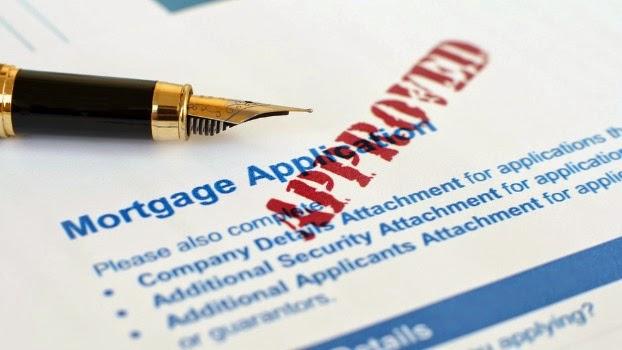When you’re evaluating a potential real estate investment, one of your top considerations should be cash flow, no matter how much you love the property. For rentals, two factors maximize cash flow: the rental income and the loan terms. Your goal should be to charge the highest rent the market will bear — certainly enough to cover the mortgage payment, insurance, property taxes and maintenance — while keeping the property occupied.

The second way to maximize cash flow is to get the best loan terms. The lower your rate, the more profit you realize each month. Lenders examine three factors when establishing an interest rate for a mortgage: the borrower’s credit scores, the loan-to-value ratio and ability to repay (ATR).
Lenders use credit scores, also called FICO scores, to help them evaluate the likelihood that a borrower will default. The higher the score, the better the borrower’s credit. For a borrower to qualify for a loan, most mortgage companies require a credit score of at least 640, although some lenders allow scores as low as 620.
Credit scores above 740 get the best rates, while scores in the 640 or 620 range will receive slightly higher rates. Real estate investors with lower scores can still be approved, but they won’t get the best rates available.
The loan-to value (LTV) ratio represents the percentage of the loan amount compared to the sales price of the investment. Conventional loans require that a borrower make a down payment of at least 20 percent, for an LTV ratio of 80 percent. For a $200,000 home, that comes out to a $40,000 down payment. If the LTV ratio is higher, lenders can require private mortgage insurance (PMI).
In the lender’s eye, the higher the LTV ratio, the greater the likelihood that the buyer will default. Lenders usually offer better rates for borrowers who make down payments of 25 percent or more (an LTV ratio of 75 percent or less). They like to see that the borrower has more “skin in the game.”
One place where LTV ratios play a big role is in assessing loan-level pricing adjustments (LLPAs). These are changes in loan costs derived from a combination of credit scores and LTV ratios — your risk to the bank, in other words. If you have a 680 FICO score and are planning to make a 20 percent down payment, you may be able to reduce LLPAs and get a better rate by putting 30-35 percent down.
On January 10, 2014, the Consumer Financial Protection Bureau’s (CFPB) qualified mortgage rule, which includes new ability to repay (ATR) requirements, went into effect. While lenders have always compared a borrower’s debt to income, the ATR sets down guidelines that lenders follow in order to avoid making loans to borrowers who may not be able to repay them. The magic ATR number is 43: In order for the loan to qualify as protected, a borrower’s total monthly debt may not exceed 43 percent of gross monthly income. Lenders refer to this number as the debt-to-income ratio or DTI.
Simply put, if a couple makes $10,000 per month, their monthly debt, including the mortgage payment, may not exceed $4,300. Qualified monthly debt includes principal and interest, monthly taxes and insurance and any homeowner’s or condominium dues, plus consumer debt such as automobile loans or credit cards. Daily expenses such as utilities, food, or entertainment costs aren’t included.
To get the best rate, the loan needs to conform to the ATR standards, otherwise the loan may either be declined altogether or approved using different types of loans with higher rates.
You’ll discover when you’re comparing mortgage rates from different lenders that they’re probably very similar. You won’t find one lender offering you 4 percent while everyone else is quoting 5 percent on the identical loan. In addition, when researching current mortgage rates, remember that the rates you’re quoted are based upon your specific scenario. There’s no “one-size-fits-all.”
At the same time, rate adjustments are typically in increments of 1/8th of one percent, so it’s not necessarily a deal-killer if you can’t make a higher down payment or improve your credit score — but it does affect your monthly cash flow. (Note: FHA loans are available for down payments as low as 3.5 percent at competitive rates, but do come with built-in insurance premiums.)
Another strategy you can use to reduce your monthly payments is to pay more points up front. A point is a fee equal to 1 percent of the loan amount. For the $200,000 home mentioned earlier in this article, a point would be $2,000. “Discount” points are pre-paid interest on your loan in return for a better interest rate. This strategy works best if you plan to own the property for several years, for its rental income.
In sum, optimizing these three factors — credit scores, the loan-to-value ratio and ATR — can help you get the best rates and terms for an investment property. Even if you don’t get the absolute best rate on the planet, you’ll know what to do the next time when you apply for a loan. Get your credit scores up, plan on putting more down and keep your debt-to-income ratios in line.
This information was originally published on Auction.com, LLC, the nation’s leading online real estate marketplace. Founded in 2008, the company has sold nearly $20 billion in assets since 2010. Auction.com has more than 900 employees and offices in Irvine and Silicon Valley, California as well as offices in Atlanta, Austin, Denver, Miami and Newport Beach. Visit us at www.auction.com, or on Twitter, Facebook and LinkedIn.